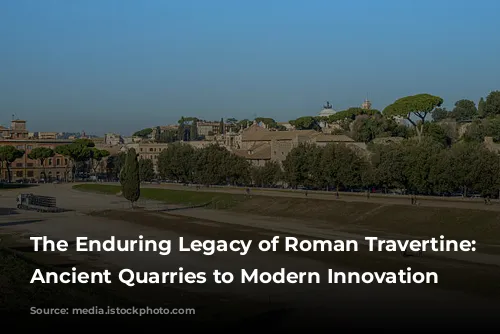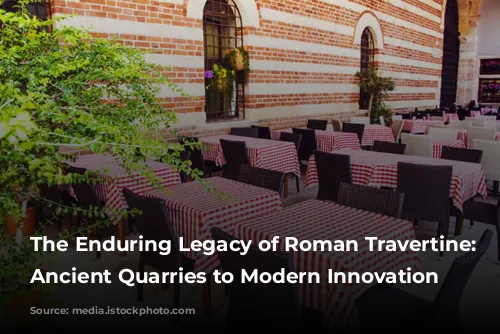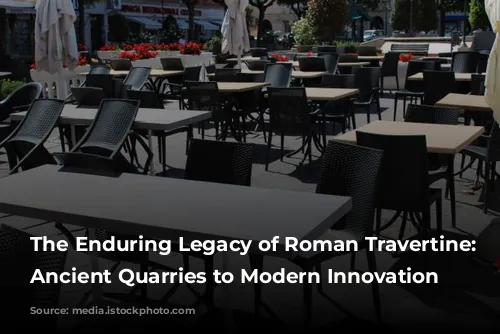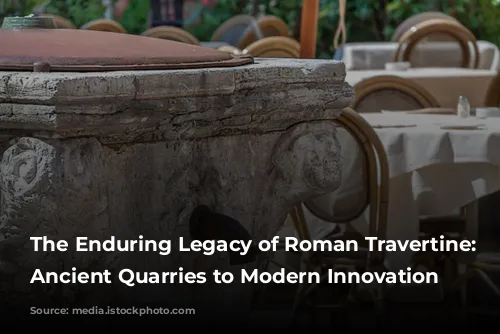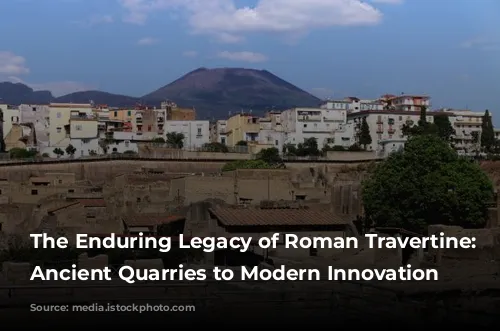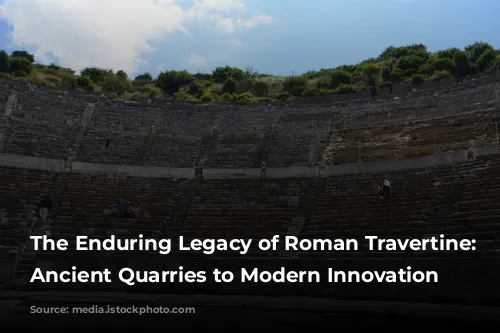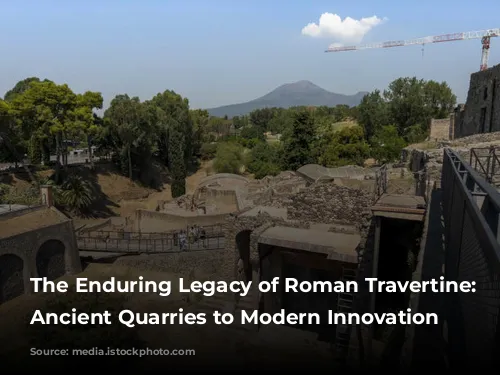Travertine, a stunning natural stone, has played a pivotal role in shaping the history and architecture of Rome. Its journey began in the Barco quarries of Tivoli, where the Romans first discovered this precious resource in the 3rd century BC.
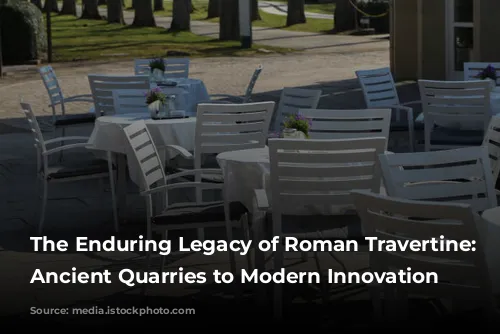
The Birthplace of Roman Travertine: The Barco Quarries
The Barco quarries, nestled in the picturesque slopes of Tivoli, were once known as “Ager Tiburtinus,” a name that encompassed the entire valley. This magnificent stone, initially called “Lapis Tiburtinus,” derived its name from the city itself, reflecting its origin.
The roman travertine extracted from these quarries was formed over tens of thousands of years through the sedimentation of calcium carbonate in hot thermal springs known as “aquae albulae.” These springs, rich in sulphurous waters, were renowned for their health benefits, prompting the Romans to build thermal structures around the quarries, some of which are still in use today in Tivoli Terme.
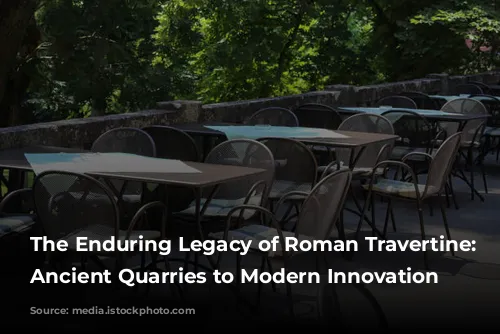
The Rise and Fall of Ancient Quarry Operations
The extraction of travertine in ancient times was a meticulous process. Blocks were painstakingly cut from the rock face using pickaxes and wooden wedges. The Aniene River and the Via Tiburtina served as vital transportation routes, facilitating the movement of travertine from Tivoli to Rome. Ox-drawn wagons and wooden rafts were employed to carry the heavy stone, with the river current providing propulsion for the rafts.
The extensive use of Roman travertine is evident in numerous iconic structures throughout Rome, including the Colosseum, Marcellus Theater, Porta Maggiore, and the Temple of Claudius. Roman travertine also found its way into aqueducts, columns, thresholds, jambs, and architraves, showcasing its versatility and durability.
Following the decline of the Roman Empire, the quarries faced abandonment due to the high cost and labor-intensive nature of the extraction process. However, the demand for Roman travertine never truly vanished. During the Middle Ages, people resorted to reusing existing travertine, leading to significant damage to ancient buildings and monuments.
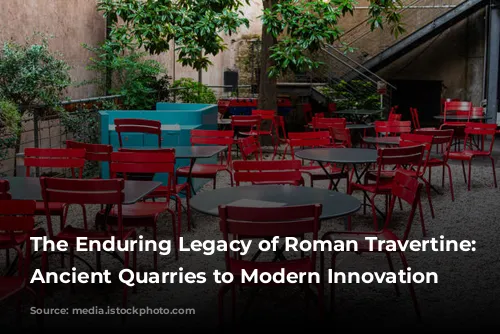
Resurgence and Transformation: The Barco Quarries in the Renaissance and Beyond
The 16th century witnessed a revival of interest in Roman travertine, fueled by the ambitious construction of St. Peter’s Basilica. This project, showcasing the beauty of Roman travertine in the St. Peter’s Colonnade, marked a resurgence in its popularity.
The agert Tiburtinus was transformed into a hunting reserve by Cardinal Ippolito II d’Este, who renamed it “Parco” or “Barco.” This name gradually extended to the quarry area, establishing the Barco quarries as a prominent source of Roman travertine.
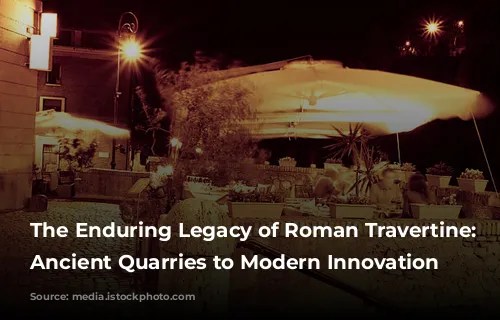
Modernization and Innovation: The Evolution of the Barco Quarries
Since their ancient origins, the Barco quarries have witnessed remarkable advancements in extraction and transportation techniques. The late 19th century saw the construction of a tramway connecting Tivoli and Rome, replacing oxen-drawn carriages with specialized travertine wagons.
The early 20th century brought the introduction of helical wires powered by pulleys, revolutionizing the extraction process by making it more efficient and less physically demanding.
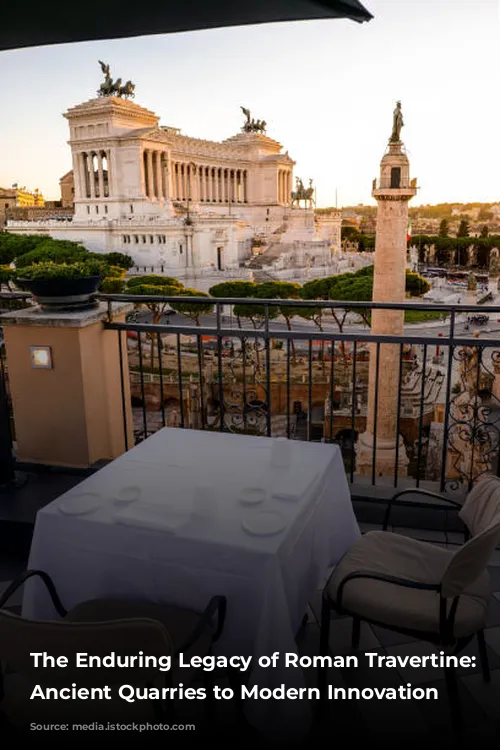
The Legacy Continues: The Poggi Family and the Future of Roman Travertine
The Poggi family, who owned agricultural fields in the Barco region, entered the travertine industry in 1923 after discovering valuable deposits beneath their land. Their company, Poggi Bros. Travertine, has since played a significant role in the resurgence of Roman travertine, contributing to iconic projects such as the fountain at Palazzo del Quirinale and the EUR district in Rome.
The company’s global reach and commitment to innovation have led to the development of state-of-the-art technologies, including the use of diamond wire for cutting stone and sophisticated machinery for producing blocks, slabs, and customized pieces. Poggi Bros. Travertine continues to strive for excellence, embracing Industry 4.0 principles to automate production processes and ensure the highest quality standards.
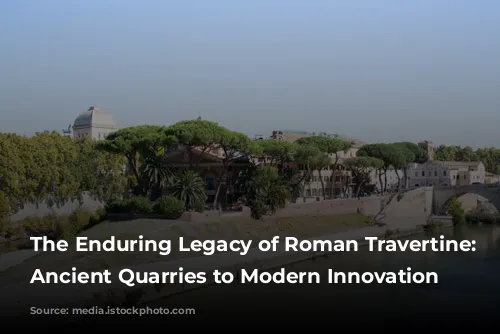
Environmental Responsibility and the Future of Roman Travertine
While acknowledging the historical significance of Roman travertine extraction, it’s important to highlight the increasing focus on environmental responsibility. Today, quarry operations are subject to rigorous regulations, requiring companies to implement responsible practices for both opening and closing quarries. The “mine backfilling” process, which involves filling exhausted quarry spaces with non-polluting materials, ensures the restoration of the original natural landscape.
The enduring legacy of Roman travertine is testament to its beauty, durability, and versatility. From its ancient origins in the Barco quarries to its modern applications around the world, Roman travertine continues to captivate with its timeless elegance and enduring quality.
